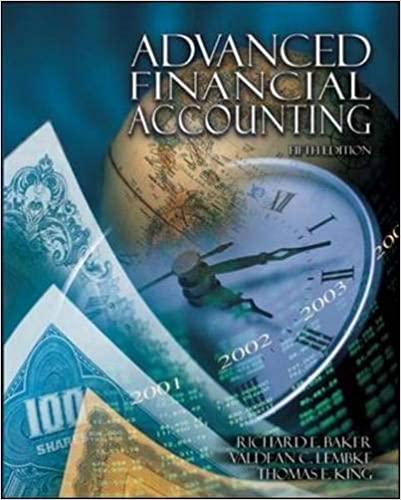Answered step by step
Verified Expert Solution
Question
1 Approved Answer
Links Disabled - Links to external workboo... Investor Returns - Model Summary Please populate the information below utilizing excel formulas where appropriate Ising the NOI




Links Disabled - Links to external workboo... Investor Returns - Model Summary Please populate the information below utilizing excel formulas where appropriate Ising the NOI from Part 3 and the Debt from Part 1 1 What would the purchase price of the project be assuming a Going In or acquiring capitalization rate of 7\% (assume Tenant \#2 was known and the first 12 months of income assumed as part of purchase price) Purchase Price: Purchase Price = NOI / Capitalization Rate Purchase Price =$392,040/0.07=$5,600,571.43 Therefore, assuming a capitalization rate of 7%, the purchase price of the project would be approximately $5,600,571.43. 2 Calculate Internal Rate of Return to the investor based on a sale of the project at 12/31/26 using a 6.75% Cap Rate as sale value and 2% closing costs. Assume minimum $10,000 working capital at end of every yea All other cash fiow is Distributable to investor. 3 Explain the difference between Levered and Unlevered returns. Calculate both assuming you are the only investor. What is the unlevered IRR and Multiple with all the other assumptions in \#2 the same. You may create a second version of the green tab labeled "Investor Return Model" if desired. Levered Returns: Levered returns refer to the returns on an investment that takes into account the use of borrowed funds or leverage. It considers the impact of interest payments on the investment returns. Levered returns are typically higher than unlevered returns because the investor benefits from the leverage effect. Unlevered Returns: Unlevered returns, also known as unleveraged or pre-tax returns, represent the returns on an investment without considering the use of borrowed funds or leverage. Unlevered returns do not take into account interest payments or the impact of debt on the investment. It provides a measure of the investment's performance based solely on the underlying cash flows generated by the investment. 4 Would you recommend this investment to someone if their alternatives were potential Stock Market return - 14% potential Corporate Bond Investment - 11% Investment in US Treasuries - 5\% Decsribe risk profiles of each 5 You Capitalized this project with an institutional partner who requires an 8% return before sharing in any profits. The institutional partner provided 90% of the required equity and you provided the remaining 10%. a. This type of joint venture is best organized legally by creating an entity known as? b. What is the Institutional partners maximum exposure in the capital stack? (i.e. - how high in the stack is this partners "last dollar") a. This type of joint venture is best organized legally by creating an entity known as a Limited Liability Company (LLC). An LLC provides limited liability protection to its members while allowing for flexible management and profit-sharing arrangements. b. The institutional partner's maximum exposure in the capital stack would typically be considered as the "last dollar" in terms of priority of repayment. In this scenario, since the institutional partner provided 90% of the required equity, their maximum exposure would be up to the point where their investment is fully repaid before any profits are shared. Using the Information Below, Calculate the Net Operating Income for 2023 through 2028 Tenant 1 - 67,000 square feet $13.75 per square foot rent Increases 2% annually Lease Start Date - 1/1/2021 Lease End Date - 12/31/2032 Assume no Tenant Costs NNN Tenant 2 - 33,000 sqaure feet $14.25 PSF Increases 3\% Annually Lease Start Date - 1/1/23 Lease End Date - 12/31/30 Assume Tenant Improvement and Brokerage Commissions of \$2.37 PSF payable at start of lease NNN Expenses Per Square Foot annually Insurance $0.27 Real Estate Tax $1.91 Utilities $1.53 can Utilize and expand this format as needed if you wish to do so. Numbers below shown as demonstration only. Formulas need to be adde sing the NOI from Part 3 and the Debt from Part 1 1 2 3 4 Would you recommend this investment to someone if their alternatives were potential Stock Market return - 14% potential Corporate Bond Investment - 11\% Investment in US Treasuries - 5% Decsribe risk profiles of each What would the purchase price of the project be assuming a Going In or acquiring capitalization rate of 7% (assume Tenant \#2 was known and the first 12 months of income assumed as part of purchase price) Calculate Internal Rate of Return to the investor based on a sale of the project at 12/31/26 using a 6.75% Cap Rate as sale value and 2% closing costs. Assume minimum $10,000 working capital at end of ev All other cash flow is Distributable to investor. Explain the difference between Levered and Unlevered returns. Calculate both assuming you are the only investor What is the unlevered IRR and Multiple with all the other assumptions in \#2 the same. You may create a second version of the green tab labeled "Investor Return Model" if desired. 5 You Capitalized this project with an institutional partner who requires an 8% return before sharing in any profits. The institutional partner provided 90% of the required equity and you provided the remaining 10%. a. This type of joint venture is best organized legally by creating an entity known as? b. What is the Institutional partners maximum exposure in the capital stack? (i.e. - how high in the stack is this partners "last dollar")
Step by Step Solution
There are 3 Steps involved in it
Step: 1

Get Instant Access to Expert-Tailored Solutions
See step-by-step solutions with expert insights and AI powered tools for academic success
Step: 2

Step: 3

Ace Your Homework with AI
Get the answers you need in no time with our AI-driven, step-by-step assistance
Get Started


